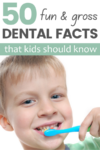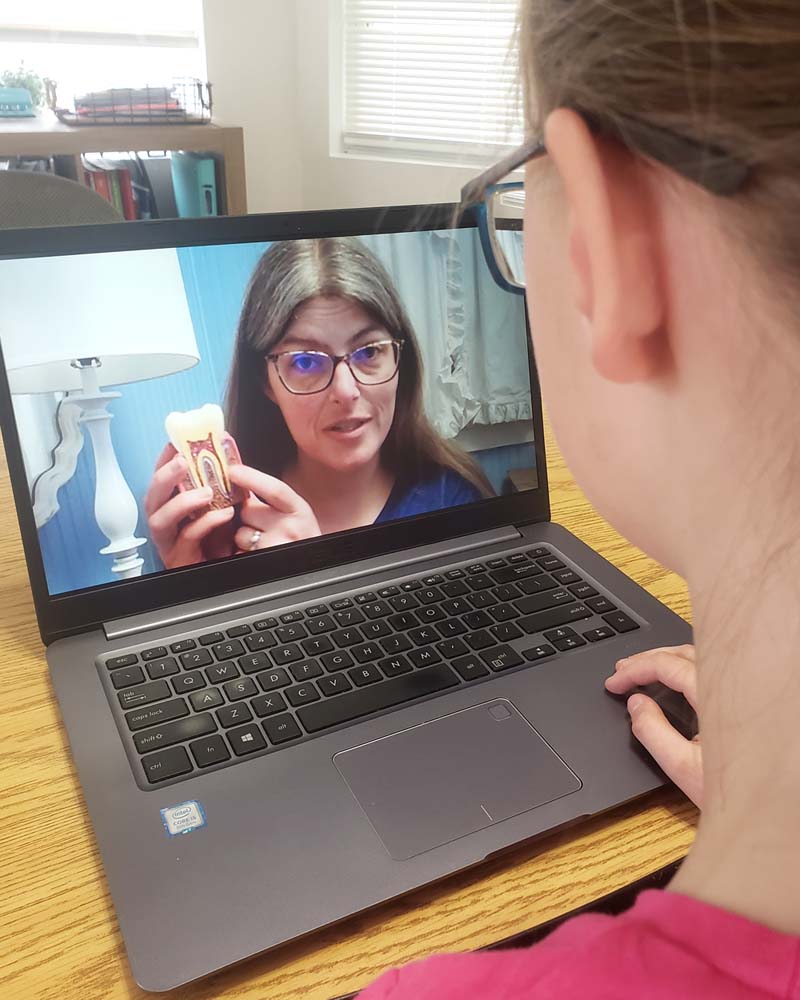50 Fascinating Dental Facts for Kids (Homeschool Health Curriculum)
February is National Children’s Dental Health Month. This month, use these fun dental facts for kids to help your family learn more about the teeth and proper dental care.
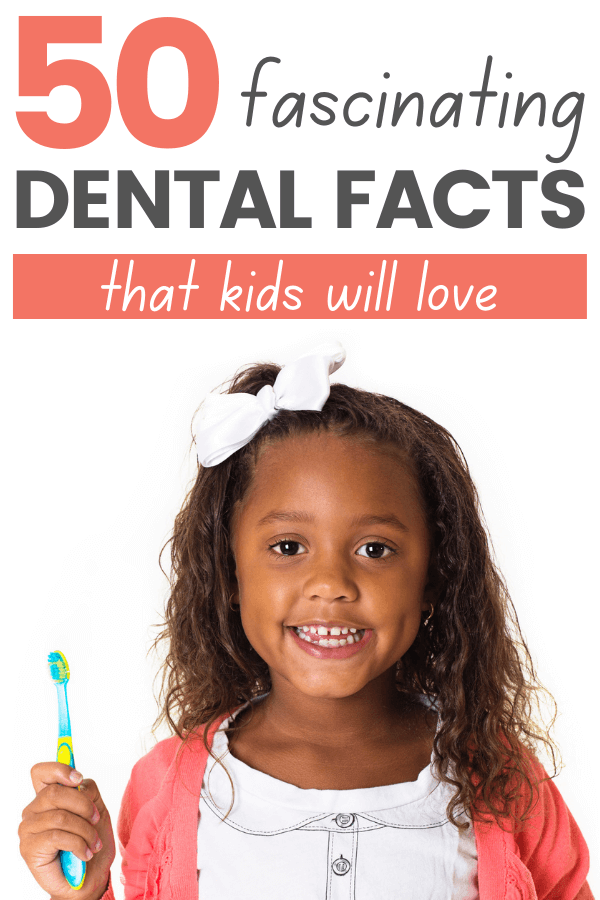
This post is sponsored by Dr. Robin’s School of Pre-Medicine. I was compensated for my time writing this post. See my Disclosure Policy for more information.
As parents, we know that it is important to prioritize oral health from an early age. Proper oral hygiene during childhood can help our kids avoid lifelong dental problems.
Use the fun teeth facts below to start teaching your kids about dental health. Then help them learn more about their teeth (and the rest of their body, too!) with the homeschool health curriculum from Dr. Robin’s School of Pre-Medicine.
What Are Teeth Made Of?
1. Well, first of all, did you know that only two thirds of a tooth can be seen above your gumline? That part that you can see is called the crown.
2. The other one third of the tooth is the root, which you can’t see since it is covered by your gums.
3. The crown is covered with enamel (that’s the hard, shiny surface on the outside of your tooth) to protect the sensitive part of the tooth.
4. Enamel is the hardest substance in your body–it’s even harder than your bones! Wow!
5. Tooth enamel is made up of 96% minerals, which is more than any other tissue in your entire human body.
6. Underneath the tooth enamel is dentin, which is very hard, but not as hard as enamel. The dentin protects inside of the tooth, or pulp.
7. The pulp contains nerve endings and blood vessels. The part of your tooth that hurts if you have a cavity or eat something really cold is the pulp.
8. The root of the tooth is protected by a covering called cementum.
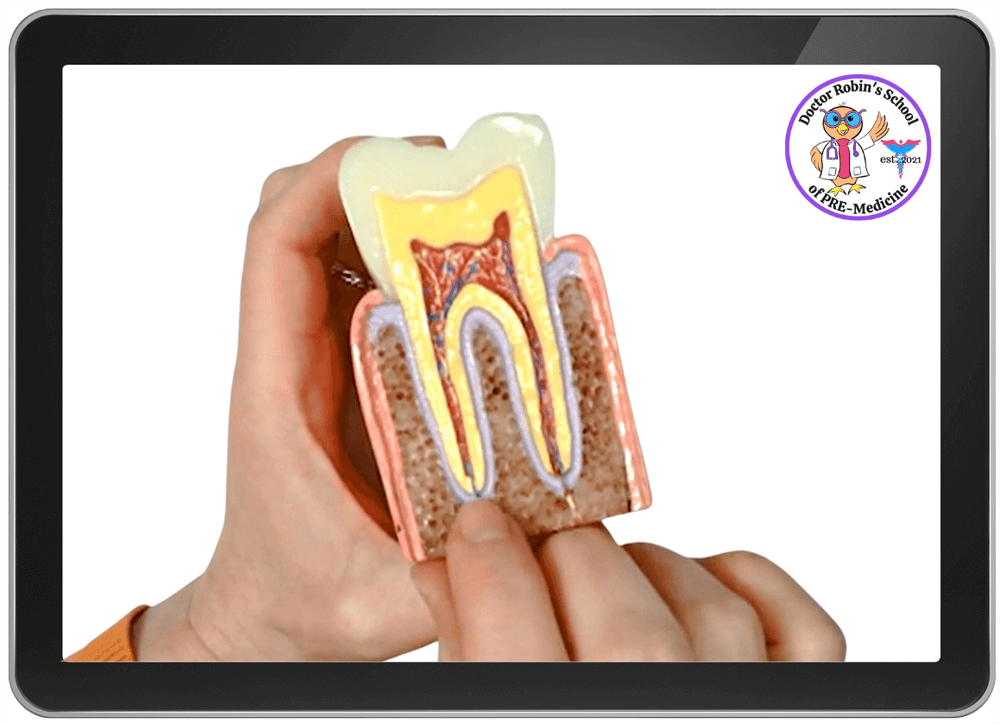
How Do Teeth Grow?
9. You probably already know that you’ll grow two full sets of teeth in your life: baby teeth and adult teeth.
10. Your first set of teeth, which we usually call baby teeth, started to grow inside your gums before you were even born.
11. Baby teeth usually start to come through the gums when you’re between 6 and 12 months old.
12. Sometimes babies are born with a tooth already showing. (That doesn’t happen very often!)
13. Young children have a total of 20 baby teeth, or temporary teeth.
14. When you are about 5 or 6 years old, your baby teeth start to get wiggly and fall out. That’s because the baby teeth are being pushed out by the permanent teeth that are starting to grow in.
15. By the time you are 12 or 13 years old (or sometimes earlier), you will probably have lost all your baby teeth and have your new, permanent teeth (or adult teeth).
16. When you have all of your permanent teeth, you will have a total of 32 teeth.
17. Your wisdom teeth will be the last teeth to come in; they usually come in when you are between the ages of 17 and 25.
18. But guess what? Some people never get wisdom teeth!
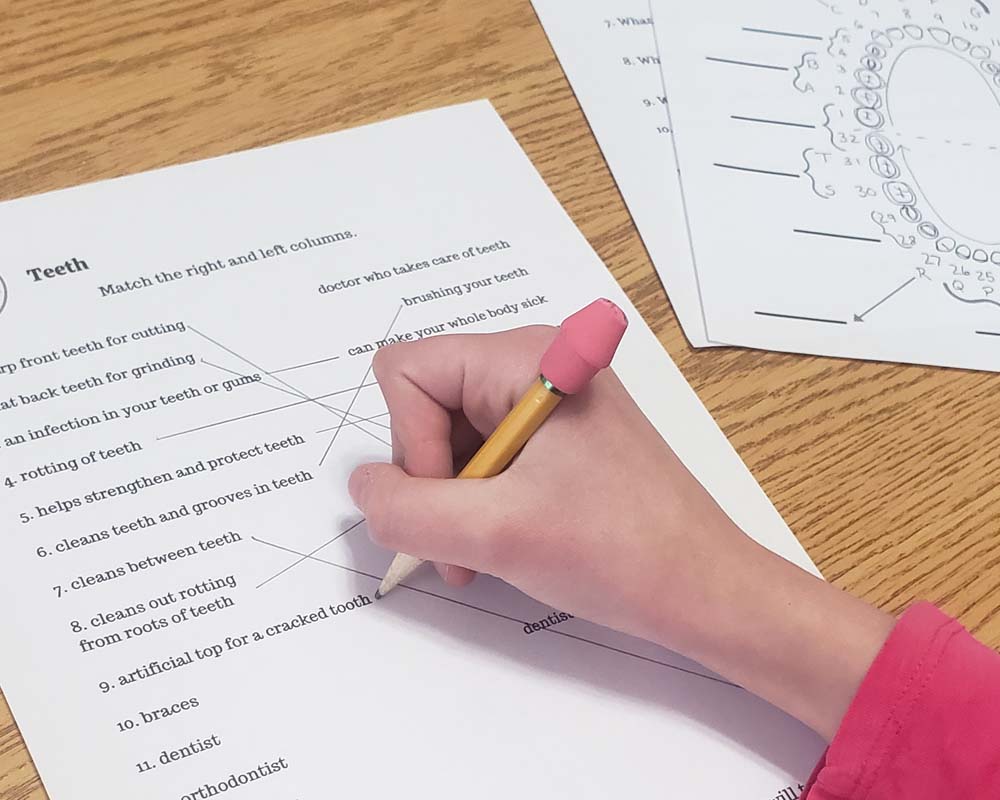
Need worksheets? Get these printable worksheets from Dr. Robin’s School in the Human Body Unit or in the full membership!
Why Do We Have Different Types of Teeth?
19. When you have all of your permanent teeth, you will have four types of teeth: molars, premolars, canines and incisors. Each type is used for different eating jobs, like cutting, tearing, and grinding your food.
20. The incisors are your front teeth; you have four incisors on the top and four on the bottom. The incisors cut your food into smaller pieces so you can chew them more easily.
21. The canines are the sharp, pointy teeth on each side of your incisors. You have two canines on the top and two on the bottom; they help you tear up chewy foods like meat.
22. The premolars, or bicuspids, are the ones next to your pointy canine teeth. You have four premolars on the top and four on the bottom. These teeth are bigger and stronger than the incisors and canines; they help you crush and grind up your food.
23. The molars are the ones behind your premolars. You have four on the top and four on the bottom. The molars are the strongest teeth of all; they help you finish grinding up your food up so you can swallow it easily.
24. The wisdom teeth are the last four teeth to come in; they will be the very last teeth in the back of your mouth. Sometimes they don’t come in properly and have to be removed. (You don’t have to worry about that until you are at least 17 years old, though!)
What Causes Tooth Decay?
25. Tooth decay happens when plaque sticks to your teeth and releases acids that eat away at the enamel on your teeth. When the acid makes a hole in the enamel, that’s a cavity.
26. So what IS plaque? Well, dental plaque is made up of about 300 different types of bacteria. (And that’s in our mouths?? Gross!)
27. Brushing and flossing are super important because they remove plaque from your teeth to help keep you from getting cavities.
28. If you don’t floss, almost half of your tooth surfaces (40%) are not getting cleaned. So always floss your teeth to remove that plaque!
29. Baby teeth can develop a serious cavity in less than a year, because the enamel on baby teeth is thinner than the enamel on adult teeth.
30. About 78% of people in the United States develop a cavity by the time they are 17 years old.
31, Tooth decay is the second most common disease in the United States. The only disease that happens more often is the common cold.
32. People who drink 3 or more glasses of soda each day have 62% more tooth decay than other people do.
Here’s a great video about tooth decay from Dr. Robin’s School of Pre-Medicine:
Why Do We Need Saliva?
33. Saliva contains important minerals that protect your tooth enamel and help prevent tooth decay.
34. Saliva also helps wash away food and bacteria from your teeth.
35. Your mouth will produce about 25,000 gallons of saliva in a lifetime–that’s enough liquid to fill TWO swimming pools!
Fun Facts About Teeth
36. The average person spends approximately 38.5 days brushing their teeth during their lifetime. That means you’ll spend almost 40 days of your life brushing your teeth!
37. Regular brushing is so important for healthy teeth, but if you brush too long or too hard, you can actually damage your teeth by wearing away the protective enamel.
38. Did you know that your teeth are actually alive? Yes, really! If one of your teeth accidentally gets knocked out, you can put it in a glass of milk to help keep it alive while you head to the dentist.
39. No one else in the world has the same exact shape of teeth as you do. Your teeth are just as unique as your fingerprints are. Wow!
40. And while we’re talking about uniqueness, your tongue print is different from everyone else’s, too!
41. When you bite down, you can exert about 200 pounds of pressure with your teeth. That’s a LOT! Keep in mind that if you bite down that hard, though, you can actually break your teeth.
42. A pediatrician named Oleg Skavyesh set a record by pulling a ship that weighed over a million pounds with his teeth. This is NOT something your dentist would recommend trying, though!
43. People tend to chew their food mostly on the same side as their dominant hand. In other words, if you write with your right hand, you might find that you chew more on the right side of your mouth. If you are left-handed, you may chew more on the left side. Hmm, anyone wanna test this out?
Dr. Robin’s School offers a full homeschool health curriculum with high-quality video lessons about the human body, including several lessons on the teeth and dental care for kids.
Cool Historical Facts About Teeth and Dental Care
44. Ancient Sumerians believed that a tooth worm caused tooth decay. They weren’t the only ones to have this gruesome idea; apparently people in ancient India, Egypt, Japan, and China believed the same thing!
45. In the 1700s, an Englishman named William Addis had the bright idea of fastening boar bristles to a bone handle to make a toothbrush. How would you like to use that kind of toothbrush?
46. Toothbrushes with nylon bristles similar to what we use today weren’t sold until the 1930s.
47. And what about dental floss? An early form of modern dental floss was invented by Levi Spear Parmly, a dentist from New Orleans, in 1815.
48. George Washington, the first president of the United States, lost most of his adult teeth before he was 21 years old. He was able to have dentures made, but they weren’t anything like the dentures people wear today.
49. Some people say that Washington’s dentures were made from wood, but that’s not true. They were actually made from teeth (human teeth, and probably some cow and horse teeth), ivory (possibly elephant ivory), and various metals.
50. One of Sir Isaac Newton’s teeth was sold in London in 1816 for $3,633. That would be over $35,000 today! That’s a pretty pricey tooth!
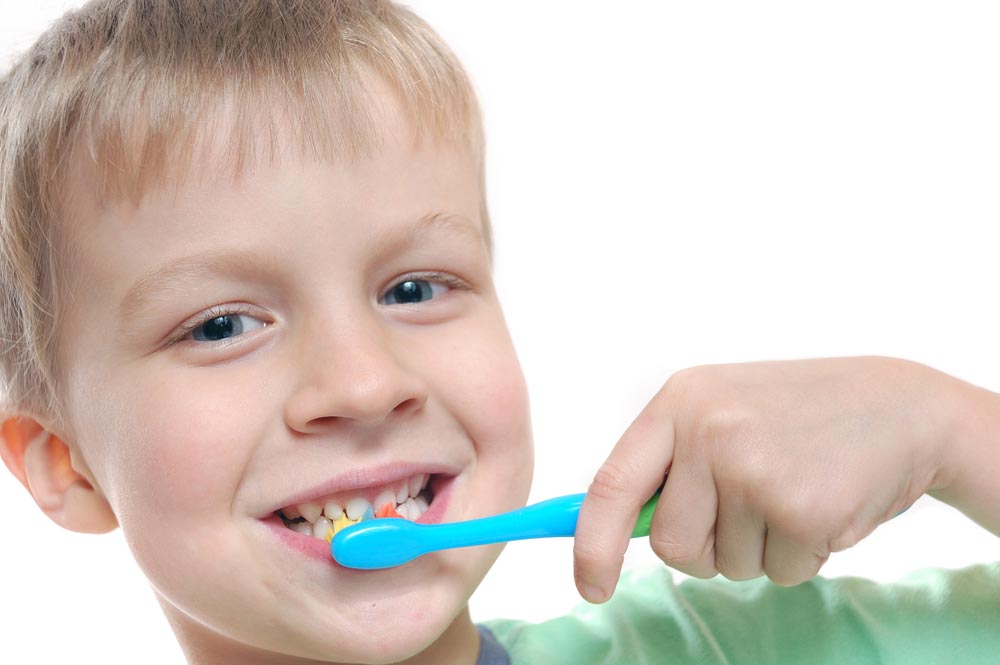
Dr. Robin’s Homeschool Health Curriculum
Dr. Robin’s School is an online health curriculum for homeschool students. The curriculum includes in-depth video lessons, printable worksheets, and full answer keys.
Each lesson is taught by Dr. Robin Dickinson, MD, a board-certified family physician and homeschooling mom. Using hands-on activities, stories, metaphors, and models, Dr. Robin teaches HOW the human body actually works.
My 10-year-old daughter strongly dislikes science, but she absolutely loves Dr. Robin’s School. As she says, “She [Dr. Robin] takes big words and breaks them down into smaller words that make sense to me. She has lots of models to show how things work . . . teeth, muscles, a skull, and more.”
We have tried so many different science courses, but Dr. Robin’s School is by far Kendra’s favorite of them all.
Maybe your child dislikes science like my daughter does (or thought she did!) . . . or maybe they love science or even dream of being a doctor someday.
Either way, Dr. Robin’s School of Pre-Medicine is the BEST curriculum I’ve found for teaching human biology and health to kids.
Dr. Robin also has several other great resources for you, including a weekly podcast and a list of unique science gift ideas.
I also encourage you to subscribe to Dr. Robin’s newsletter to receive FREE lessons, worksheets, and more!

Enter to Win a Health Curriculum Subscription
Enter below for the opportunity to win a 1-year subscription to Dr. Robin’s School of Pre-Medicine! Two winners will be chosen. And everyone who enters will get FREE access to lessons from Dr. Robin’s most popular unit, The Eight Senses.

